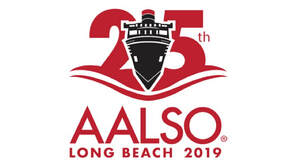Dirty Laundry Abstracts
|
Full Abstract
In 2017 SEA LIFE Minnesota started to monitor coliform bacteria within several of our main systems. After collecting 51 samples over a 30 week period, we established two exhibits had an average coliform level of 3500 MPU/100ml. Both of the systems in question contain marine turtles; therefore we were not compliant with permit conditions set by U.S. Fish and Wildlife Services (USFW). Furthermore, we offered a public snorkel program in one such system so this became a health and safety concern as we also discovered E.coli. Our site is over 20 years old and significant facility and environmental degradation had occurred before it was acquired by Merlin Entertainments in 2011. These test results expedited several projects addressing challenges with our sand filters, isolation valves, reclaim reservoirs and ultimately the installation of ultra violet sterilization on both systems. After completing these steps we have observed a 99% reduction in coliform bacteria. |
Will be published by May 10, 2019
Managing Water Quality and Disease Outbreaks in a Large Multi-Taxa Aquatic Exhibit Nina Fisher, New England Aquarium Full Abstract
The Giant Ocean Tank at the New England Aquarium is a 200,000-gallon Caribbean coral reef exhibit with over 100 species of animals. Since 2010, we have had repeated and frequent Cryptocaryon outbreaks that we have treated with either copper at varying concentrations, Chloroquine or more recently hyposalinity. We found this last method to be easier to manage and just as effective as copper and have been using this as a tool in managing disease outbreaks in the exhibit since 2017. In addition to Cryptocaryon, we also had to treat a Neobenedenia sp. outbreak using Praziquantel. We developed a ‘Disease Condition Status’ for the tank that allowed us to quantify disease and correlate it with different water quality parameters. Analyzing this data showed that nitrite spikes frequently occurred before a Cryptocaryon outbreak and that these spikes started happening after we switched from gravity sand filters to rapid sand filters in early 2010. These results led to the installation of a life support augmentation loop in 2018 which included additional protein skimmers and rapid sand filters. |
“Once in a Lifetime”: The Challenges of a Rebellious Exhibit Filled with Pinnipeds
Warner Buchman, Riverbanks Zoo and Garden Watch Video (Login required) Full Abstract
This presentation focuses on coping with an exploding, cracking and “we have never seen that before” confronted exhibit and the importance of realizing that your installation will always be unique. This is especially important when you have one of three exhibits in the entirety of the United States which operate Neptune Benson Defender Filters utilizing perlite as their filtration media. Sea Lion Landing opened in June of 2016. It is an exhibit of 270,000 gallons of house mixed salt water filled with 3 harbor seals and 5 sea lions. Its golden child sister exhibit exists in the Fresno- Chaffee Zoo in California. Same designer, wetlands, filters, etc... and yet we have had completely different experiences. This discussion will dive further into the differences and similarities and what we learned from comparing the golden child to the rebellious one. The most important thing is learning and connecting with your network and contractor community and finding your own niche. When there is “water flowing under me... you may ask yourself how do I work this?”. |
|
Using Data Analysis to Mitigate the Effects of Catastrophic Jelly Blooms
Sean Thompson, Monterey Bay Aquarium Watch Video (Login required) Full Abstract
The Monterey Bay Aquarium is an open system with an intake rate between 1,200 and 2,000 gpm (4,540 – 7,570 lpm) through a 1,000-foot (304m) gravity-fed intake pipe and large intake screen. The interior pipeline walls are settled by organisms, increasing friction losses and necessitating periodic pigging. The intake screen is sporadically infested by jelly blooms, causing catastrophic failure of the screen and intake sump. Data analysis was used to determine changes of the intake pipe friction coefficient and to calibrate disparate data sets from internal sensors and external sources (NOAA) to parse out effects of pipe and screen growth. Deviation from baseline friction coefficient is predictive of jelly occlusion and serves as a short-term warning before catastrophic effects are realized. |

